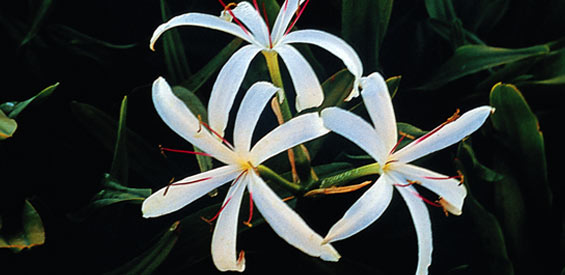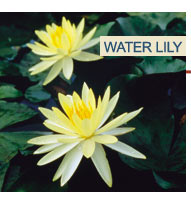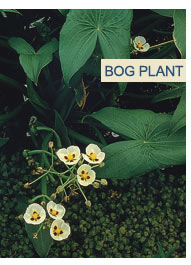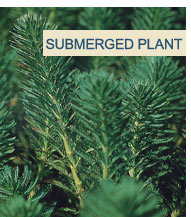
Summer should be spent by pond owners relaxing and enjoying their outdoor living space. However, summer can also mean a grueling feud with nuisance algae. Increased sunlight and rising water temperature create ideal conditions for aggressive algae growth. This summer, supplement existing pond filtration and keep algae control simple through the creative use of pond plants.
Beautiful and functional plants
Pond plants are beautiful additions to any pond or water garden. But do you know they are also efficient competitors against algae? Both desirable pond plants and algae have the same requirements to thrive in the pond environment. Large numbers of healthy plants can out-compete algae for such essential plant resources as light and nutrients to help keep algae under control.
Provide shade
Adding floating plants such as
Water Hyacinths and Water Lettuce is an easy and effective way to provide shade. The lush green foliage prevents sunlight from penetrating the water surface. This shade will help limit algae growth and increase in water temperature. Water Hyacinths also produce gorgeous, purple flower clusters that add aesthetic value to your water garden.
Water Lilies and
Lotuses are two more great options. As these plants mature, they produce a green canopy above the water surface. For best algae-controlling results, it is important to cover at least half of the pond water surface with floating plants.
If you want the same benefits but do not want to use Water Hyacinths or Water Lettuce, consider floating planters. These clever planters have a buoyant ring to keep potted plants afloat. Fill these floating planters with water-loving garden favorites such as Impatiens for an unconventional and stunning display. Drifts of these floating planters provide immediate drama and revitalize the look of any water garden with minimal effort.
Reduce nutrients
While all pond plants draw excess nutrients from pond water, submerged plants offer an additional benefit. Submerged plants such as
Anacharis and
Cabomba improve water quality and clarity by filtering excess nutrients and also supply vital oxygen to fish and beneficial aerobic bacteria. Submerged plants are known as oxygenators because of their efficient production of oxygen. The additional oxygen these plants produce through photosynthesis is essential during summer when dissolved oxygen content can be significantly low. Best of all, they are easy to grow and require very little attention.
A diverse planting scheme incorporating a variety of pond plants, including floating plants,
submerged plants, and marginal/bog plants, can beautify your pond and help keep algae under control.
|






